This topic describes how to view the information about database calls of an application. You can view general information about database calls and the details of SQL calls, exceptions, call sources, and traces.
Prerequisites
Your application is monitored by Application Real-Time Monitoring Service (ARMS). For more information, see Overview.Procedure
- Log on to the ARMS console. In the left-side navigation pane, choose .
- On the Applications page, select a region in the top navigation bar and click the name of the application that you want to manage. Note If the
 icon is displayed in the Language column, the application is connected to Application Monitoring. If a hyphen (-) is displayed, the application is connected to Tracing Analysis.
icon is displayed in the Language column, the application is connected to Application Monitoring. If a hyphen (-) is displayed, the application is connected to Tracing Analysis. - In the left-side navigation pane, click Database Invocation.
- On the Database Invocation page, select a database and set the time period.
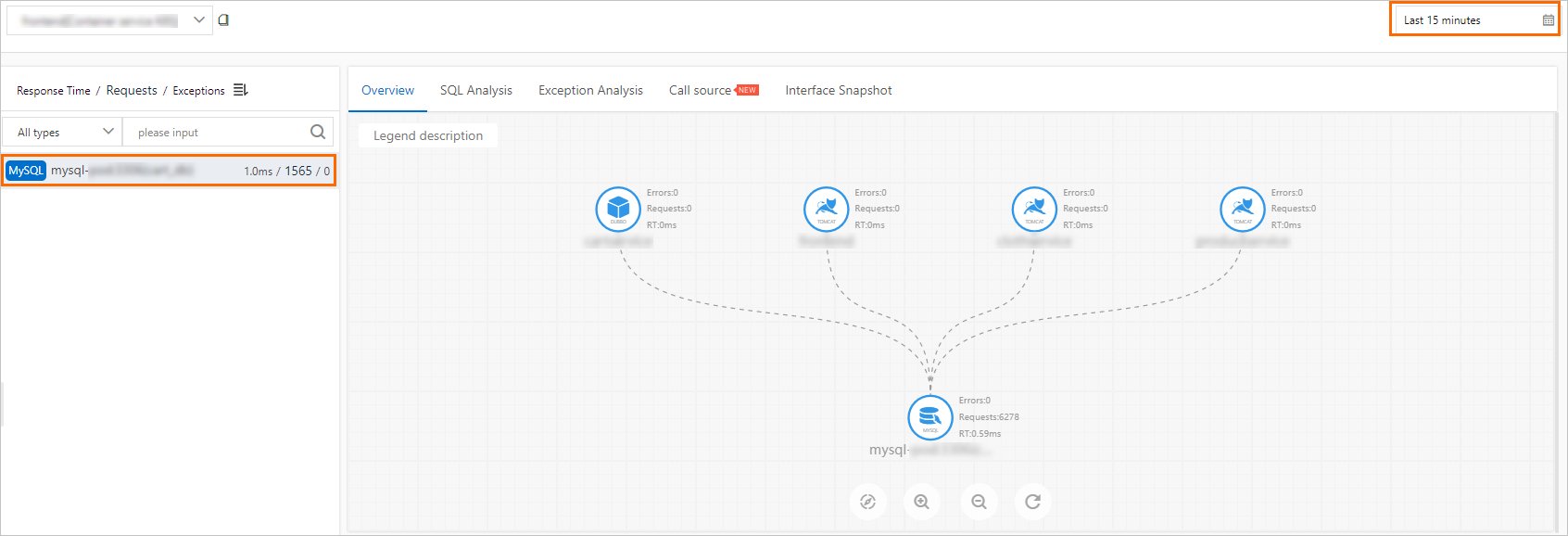
- After you complete the settings, you can perform the following operations:
- On the Overview tab, view general information about database calls of the application.
- Click the SQL Analysis tab to view the SQL analysis of the application.
- Click the Exception Analysis tab to view the database call exceptions of the application.
- Click the Call source tab to view the information about the applications that call the database of the application.
- Click the Interface Snapshot tab to view the traces of the application.
Overview
The Overview tab displays general information about database calls of the application. You can view the call topology, number of requests, response time, number of errors, result size, and performance.
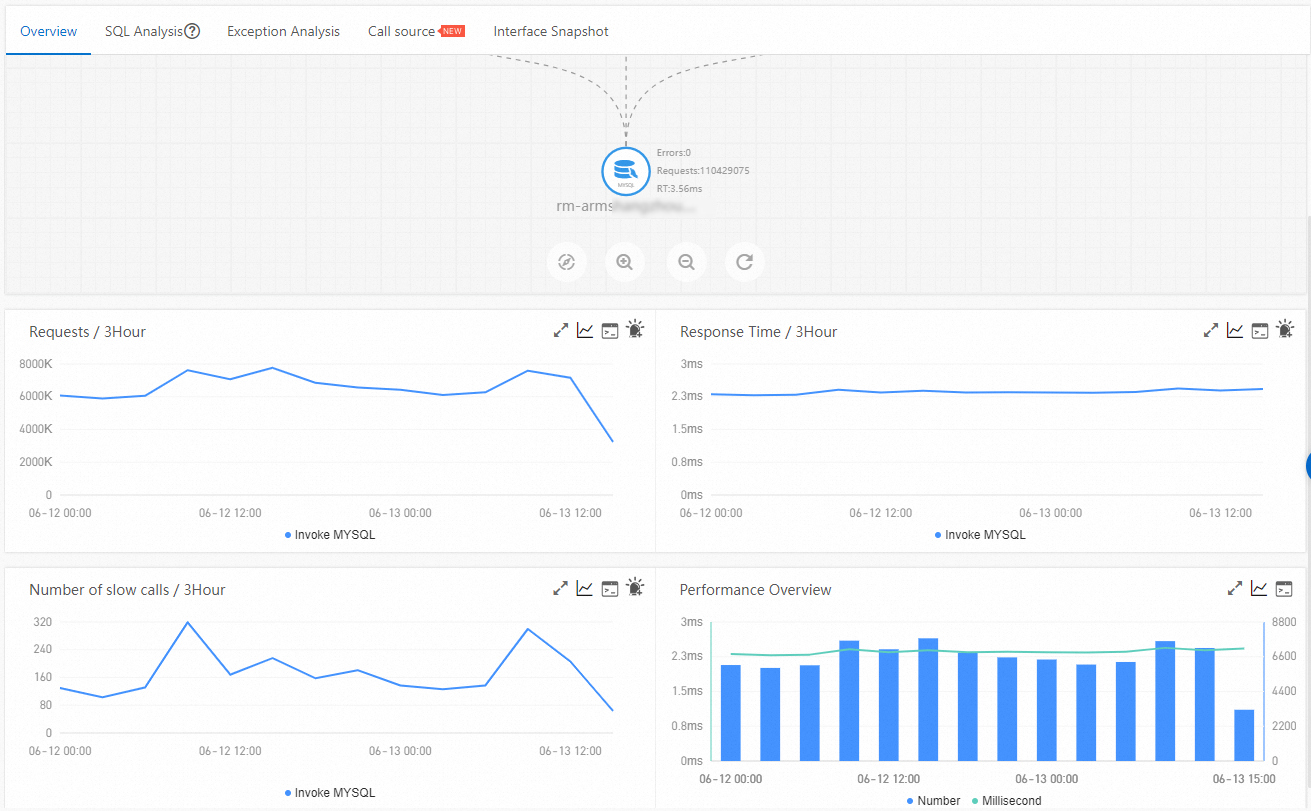
- Click the
 icon or scroll the mouse wheel up to zoom in the topology.
icon or scroll the mouse wheel up to zoom in the topology. - Click the
 icon or scroll the mouse wheel down to zoom out the topology.
icon or scroll the mouse wheel down to zoom out the topology. - Click the
 icon to restore the topology to the default size.
icon to restore the topology to the default size. - Click the
 icon to adjust the topology size to fit the page.
icon to adjust the topology size to fit the page. - Move the pointer over a chart and view the detailed statistics.
- Use the cursor to select a time period to view the statistics of the specified time period.
- Click the
 icon to view the statistics of the metric in a certain time period or compare the statistics of the metric in the same time period on different dates.
icon to view the statistics of the metric in a certain time period or compare the statistics of the metric in the same time period on different dates. - Click the
 icon to view the API details of the metric.
icon to view the API details of the metric. - Click the
 icon to create an alarm for this metric. For more information, see Create and manage an alert rule in Application Monitoring (new).
icon to create an alarm for this metric. For more information, see Create and manage an alert rule in Application Monitoring (new).
SQL analysis
The SQL Analysis tab displays the column chart for the number of SQL calls, the time series curves for the response time, and a list of SQL statements that are executed in the database.
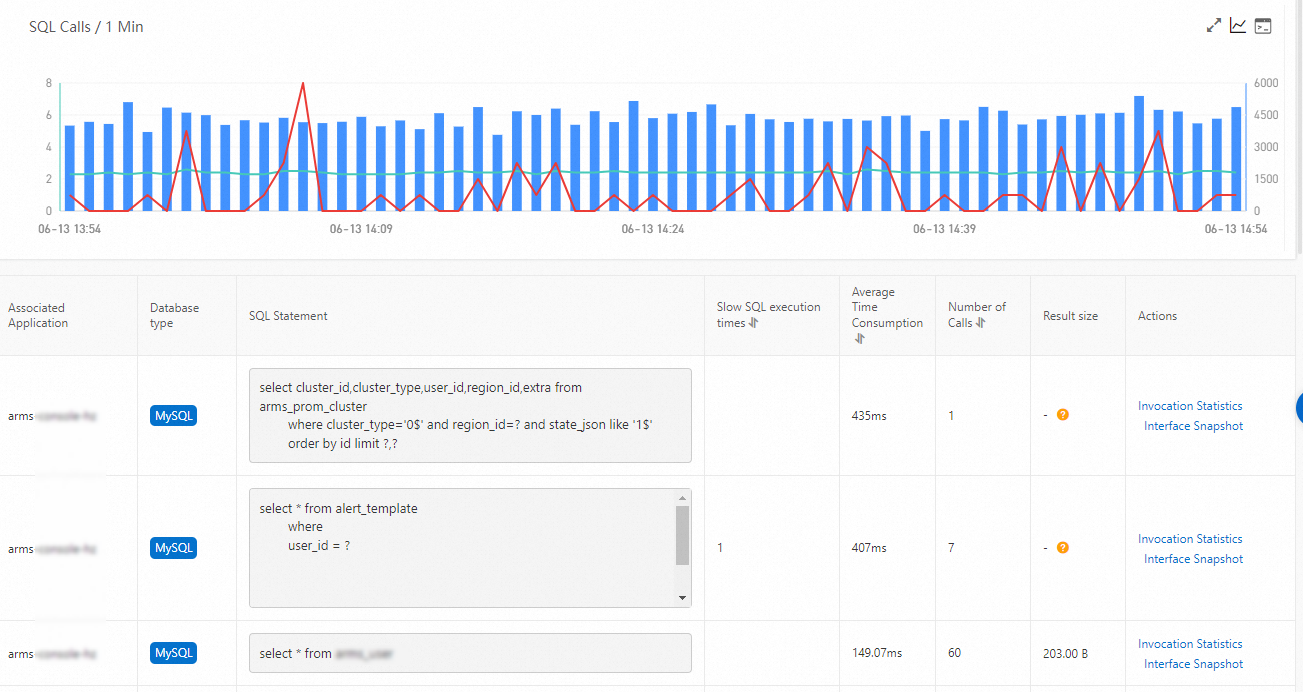
- Move the pointer over a chart and view the detailed statistics.
- Click the
 icon to view the statistics of the metric in a certain time period or compare the statistics of the metric in the same time period on different dates.
icon to view the statistics of the metric in a certain time period or compare the statistics of the metric in the same time period on different dates. - Click the
 icon to view the API details of the metric.
icon to view the API details of the metric. - To view the SQL call statistics of an SQL statement, click Invocation Statistics in the Actions column.
- To view the traces of an SQL statement, click Interface Snapshot in the Actions column. For more information, see Traces.
Exception analysis
The Exception Analysis tab displays the information about exceptions of the database.
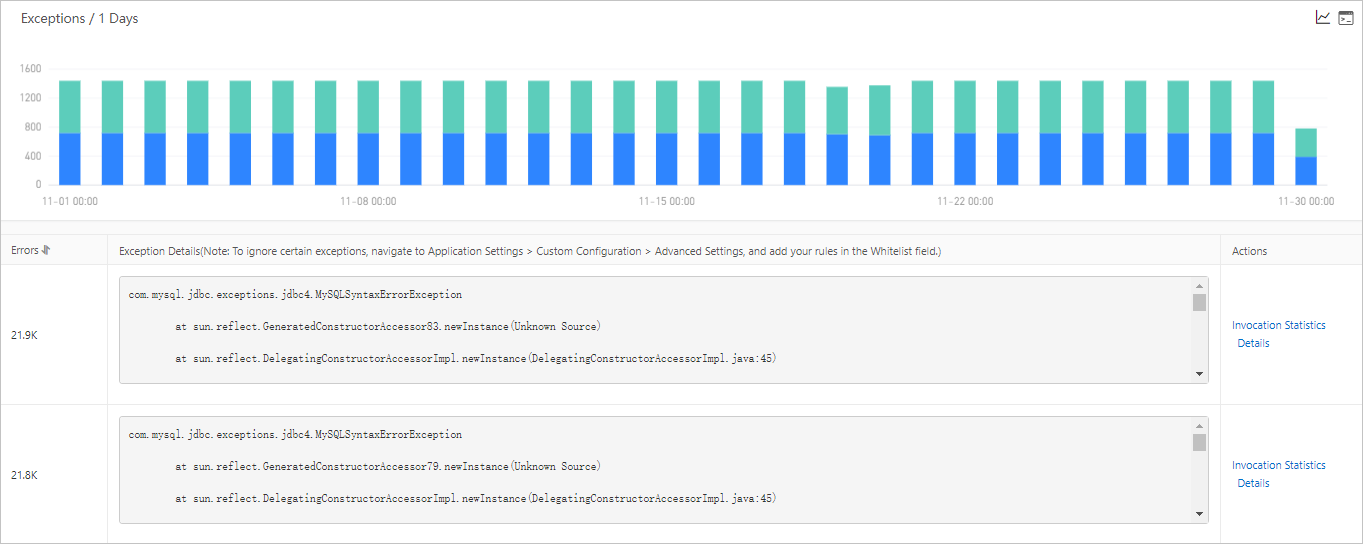
- Move the pointer over a chart and view the detailed statistics.
- Use the cursor to select a time period to view the statistics of the specified time period.
- Click the
 icon to view the statistics of the metric in a certain time period or compare the statistics of the metric in the same time period on different dates.
icon to view the statistics of the metric in a certain time period or compare the statistics of the metric in the same time period on different dates. - Click the
 icon to view the API details of the metric.
icon to view the API details of the metric. - To view the statistics of an exception, click Invocation Statistics in the Actions column.
- To view the details of an exception, click Details in the Actions column.
Call sources
The Call source tab displays the information about the call sources of the database.

- To view the information about an application that calls the database or the information about an API that is called, enter the application or API name in the search box and click the
 icon.
icon. - To view the traces of an API that is called by a call source, click view details next to the API. For more information, see Traces.
- Move the pointer over a chart and view the detailed statistics.
- Click the
 icon to view the statistics of the metric in a certain time period or compare the statistics of the metric in the same time period on different dates.
icon to view the statistics of the metric in a certain time period or compare the statistics of the metric in the same time period on different dates.
Traces
The Interface Snapshot tab displays the traces of the database.
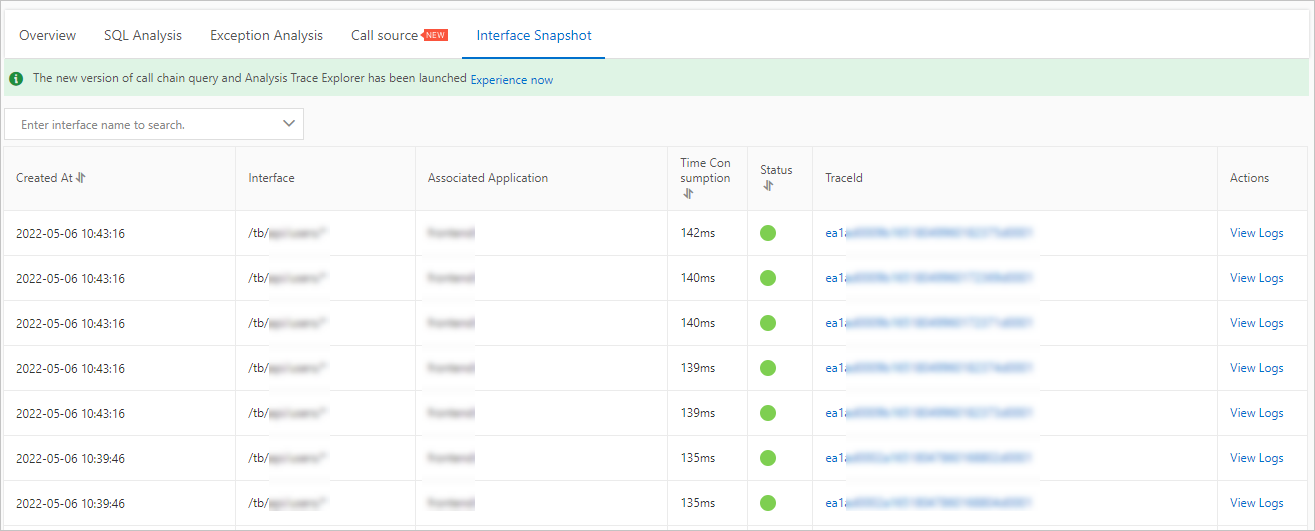
- To view all the traces of an API, enter the API name in the search box and click the
 icon.
icon. - To view the details of a trace, click the trace ID in the TraceId column. For more information, see Supported operations.
- To view the logs of a trace, click View Logs in the Actions column. Note You must associate trace IDs with the business logs of an application. This way, when an error occurs in the application, you can access the business logs that are associated with trace IDs to troubleshoot the error. For more information, see Associate trace IDs with business logs.